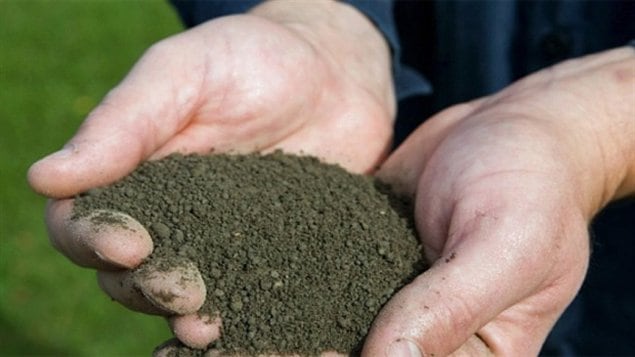It is perhaps the ultimate example of recycling, although some wags are calling it “pee-cycling”. It’s the ancient practice of using human waste to fertilize crops.
“a positive experience”
One farmer in east-coast Nova Scotia, says he’s been spreading biosolids on his fields for about six years. Jack Folkertsma says, “”It’s been a positive experience for me in seeing the soil levels increasing in fertility and being able to do it in a cost-efficient way.”
Using human waste as fertilizer on fields has been going on for centuries and currently there are between 3 and 4 million hectares of land fertilized with human waste, although admittedly in the developing world much of that is untreated.
Environmental benefits
But there are some obvious benefits to using treated, dried biosolids: It boosts soil quality, is about a quarter the cost of chemical fertilizer, requires much less in the way of fossil fuels to produce and is better used on fields than sent to costly landfill sites, making it a far more environmentally friendly option than chemicals.
Canada produces about 660,000 tons of dried biosolids a year, about half of which is spread on fields.
However, in our pharmacological times who knows what proportion of that waste is contaminated, even after treatment, with unusual chemical compounds or even mood altering drugs?
“The science that exists today doesn’t suggest that there’s a concern, but we don’t really know a lot about emerging contaminants, not just in biosolids but in wastewater, in our environment writ large,” says Bernadette Conant, executive director of the Canadian Water Network (CWN).
“There’s nothing so far to indicate that it is a problem,” she says, but the CWN is funding a series of research projects in any event, just to be certain.
There are different methods of detecting those compounds, says Gordon Price, an assistant professor in the faculty of agriculture at Dalhousie University in Halifax who is leading the research on the impact of alkaline-stabilized biosolids.
“But, often, trying to link that to an effect becomes very difficult. That’s where the science hopefully comes into play to help guide, and that’s what we’re trying to do.”
In developing countries often untreated waste is spread directly on fields, or dried for a week, although recommendations are to let it compost for several months to let pathogens die off.
In developed countries, solids are settled out of the wastewater during initial stages at waste water treatment plants. The solid fraction contains suspended and dissolved organic matter, insoluble trace elements and nutrients. After the solids have undergone secondary treatment, they are known as bio-solids which when used as fertilizer can provide essential micro (e.g. zinc, copper and iron) and macronutrients (e.g. nitrogen, phosphorus and potassium)
In Canada the Canadian Food Inspection Agency (CFIA) regulates the sale and import of biosolids intended for use as a fertilizer or supplement at the federal level. The provinces manage the maintenance and operation of wastewater treatment and/or composting facilities, and also the processing, use and management of biosolids including land application, through provincial/territorial acts and regulations.
The quality of biosolids and where they may be used is determined by parameters of federal and provincial regulations/guidelines include content and percentages of: metals, pathogens and pathogen indicators, and organic chemical contaminants and odour.
“Victoria bans it, but near Toronto its been used for three decades”
In the Greater Victoria region last fall in west coast British Columbia, regional politicians voted overwhelmingly against overturning a two-year-old ban on putting biosolids on land, as residents were opposed to the idea, fearing contamination.
At the same time, Halton region, west of Toronto, has been spreading human waste on fields for about three decades, and the municipality’s seven wastewater treatment facilities now generate about 11,000 tonnes of usable biosolids annually.
In Halifax, which until 2007 sent about 90 per cent of its sewage straight into the harbour, up to 30,000 tonnes of biosolids are now produced each year.
“In the past, we’ve had some challenges just because of the public perception, but the future is looking a little better,” says Susheel Arora, director of wastewater and stormwater services at Halifax Water.
Lise Leblanc, an agricultural consultant in Halifax who introduced Folkertsma to the use of biosolids, also sees a lot of potential for the product because of more policy and regulatory initiatives coming online.
Leblanc also sees a need for programs that teach the public more about the potential impacts of what they put down their sinks and toilets and to encourage the notion that the issue of biosolids is not just a “farmers’ thing.”
(with files from CBC)







For reasons beyond our control, and for an undetermined period of time, our comment section is now closed. However, our social networks remain open to your contributions.